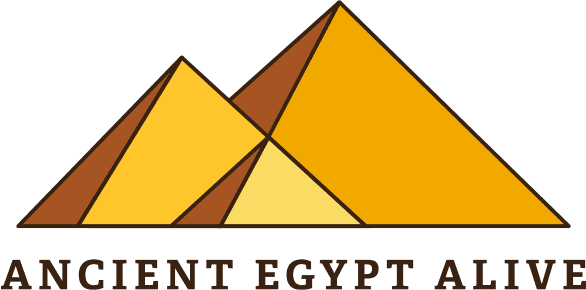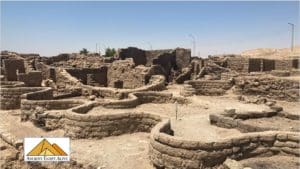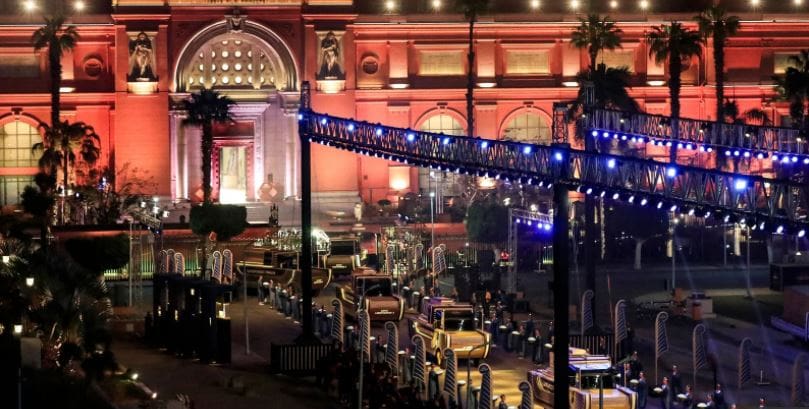A Dead Civilization Lives Again – as Archaeologists Resurrect and Vivify The Past
By Laura Ranieri-Roy
Magnificent pageantry, celebrations, mummies, some with golden tongues – another with a fetus inside her. 2021 was a resplendent year for Egypt. If 2019 and 2020 were the years of the sarcophagus – with scores of mummies, coffins and stunning burial statuary tumbling out of the sand, the past year has been a little different.
More than mortuary finds, it has been unveilings, parades, grand processions, and a magnificent ancient city unearthed that comprise the most dazzling highlights of 2021.
Egyptians take the helm
As we enter the first months of 2022, let’s take a look back at the great victories and discoveries, the work of archaeologists and cultural experts from around the world. First and foremost, let’s celebrate the native Egyptians. It is an inspiring trend these days that Egyptian Egyptologists are, more and more, at the helm of excavation projects. What extra pride they must feel in their work. These days even the director Director General of the Egyptian Museum in Tahrir, Sabah Abdel Razek, is an Egyptian lady. We have come a long way since Mariette!

Reis Mahmoued Farouk el Queftawy, at Khonsu Temple Karnak c) Laura Ranieri Roy
Without further adieu, let’s launch into our 2021 top discovery/event list:
10. Ptolemaic Mummies with Golden tongues: Taposiris Magna (west of Alexandria)
If you’ve been following the search for the resting place of the great Cleopatra the VII may have heard the name Dr. Kathleen Martinez. She is the Dominican archaeologist (a close associate of Hawass) ardently seeking Cleopatra’s tomb. Her excavations of the site of Taposiris Magna, just west of Alexandria, yielded some exciting finds in January of last year. Notably, eight marble portrait statues were found along with 16 striking Ptolemaic-era mummies. What’s most astounding is that some of the mummies actually possessed golden tongues, a first-ever discovered feature. Experts feel the ancients may have believed this would endow dead souls with the ability to speak to Osiris. Coins, too, with the face of Cleopatra were found in this temple complex associated with the worship of Osiris and Isis during the 1st century BCE.
Could Martinez be edging closer to discovering the tomb of this last great female ruler of Egypt?
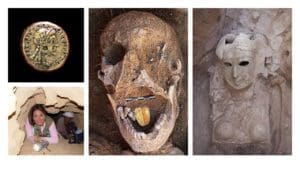
9. World’s Oldest Brewery: Abydos region
Equally exciting was the discovery of an ancient beer factory in Middle Egypt. In early February 2021, an American/Egyptian team unearthed a massive brewery near North Abydos – dating back to the time of the first dynasty – yes, BEFORE the pyramid age. This 5,000-year-old large-scale brewery dates to King Narmer, who ruled ancient Egypt around 3150 B.C (give or take 100 years).. As Abydos (at the time) was an important burial site of the first kings, it is likely that the beer was used in sacrificial rites, namely to supply the royal rituals that were taking place inside the temples and burial mounds of kings, according to Dr. Matthew Adams American archaeologist at New York University and the joint expedition leader. 5900 gallons at a time would be able to be produced. “That’s enough to give every person in a 40,000-seat sports stadium a pint,”
Adams is quoted as saying. In ancient Egypt of course, beer was consumed by everyone – it was the “water” of the day! What else might we find dating to Narmer’s time in the area of Abydos?
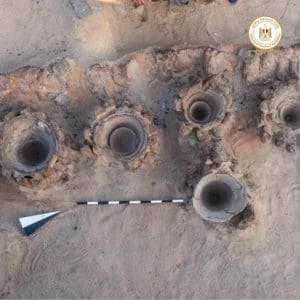
c) Egyptian Ministry of Antiquities
8. Ancient Warship discovered – Thonis Heraklion (near Alexandria)
In July 2021, divers from a joint Egyptian/American team (led by the European Institute of Underwater Archaeology) discovered a rare military vessel amid the sunken ruins of the ancient Egyptian city of Thônis-Heracleion, the largest Mediterranean port in Egypt in the days before Alexandria.
Measuring over 80 feet long, the flat-bottomed ship had both oars and a large sail. While built in the classical Greek style, it also incorporates some Egyptian shipbuilding traditions. The vessel, extracted from beneath 15 feet of clay and debris, was likely sunk when the nearby Temple of Amun collapsed in antiquity.“This discovery beautifully illustrates the presence of the Greek merchants who lived in that city,” read a statement from the Egyptian Ministry of Antiquities (as reported by Reuters). “They built their own sanctuaries close to the huge temple of Amun.”
Underwater archaeology on the Mediterranean coast is revealing so much more about late period and the Ptolemaic era, a very multicultural time in Egypt. What will the sea yield up next?

c) European Institute of Underwater Archaeology
7. First pregnant Mummy – discovered in Warsaw Museum
Polish archaeologists in April announced the first known example of a pregnant mummy. The ancient remains (discovered in 1826 and in the Warsaw museum since 1917) had always been thought to be of a male, based on the sarcophagus inscription naming an Egyptian priest. But a new CT scan project of the museum’s collection revealed some starting things.
“Our first surprise was that it has no penis, but instead it has breasts and long hair, and then we found out that it’s a pregnant woman,” archaeologist Marzena Ozarek-Szilke told the Associated Press. “When we saw the little foot and then the little hand [of the fetus], we were really shocked.” The mummy (with its fetus between 26 and 30 weeks old) will be further studied to ascertain cause of death. Today it has become the only example of a mummy containing a fetus.
CT scanning and biological sciences have become so much more advanced. More and more museums (like the Warsaw museum) are re-examining their mummy collections with the latest techniques and revealing long-lost secrets of the lives and deaths of the ancients.
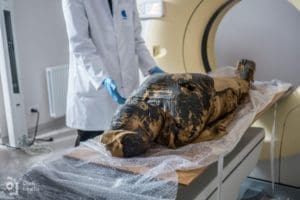
Warsaw Museum, Poland
6. Examination of Old Kingdom Mummy Khuwy – Cairo
Back in 2019, the magnificent 5th dynasty tomb of official Khuwy was discovered in Saqqara, complete with intact burials. In fall of 2021, Examination of Khuwy has revealed evidence of sophisticated mummification processes 1,000 years earlier than previously thought. It’s a finding that may rewrite the history books on mummification, according to Dr. Salima Ikram.
Khuwy, in fact, has been found to be far older than assumed and is now believed to be one of the oldest Egyptian mummies yet discovered. What’s more, the use of fine linens and high-quality resins in the mummification process 4000 years ago is changing our understanding of mortuary practices in the Old Kingdom.

c) Egyptian Ministry of Antiquities
5. Colour restoration in the famous Hypostyle Hall, Karnak
This past summer/fall, the most famous hall in Egypt’s most famous temple got a dazzling restoration. The Hypostyle Hall, a magnificent structure within the Great Karnak Temple at Luxor was started by King Seti I and finished by his son Ramses II in the 19th dynasty. With massive columns representing the primeval papyrus swamp in imperishable stone, it is one of the most striking tourist sites in Egypt.
The dazzling colour on the columns was restored last summer by Egyptian teams working in the oppressive 50-degree celsius heat of day. (I know because I saw the work in process myself one August morning). Similar work was begun last year I believe at Abydos in the beautiful Seti I temple.
In coming years, so many temples will be showing their true colours like never before, thanks to outstanding restoration work. If you have not visited in the past few years, do come back to Egypt and behold it with your own eyes!

4. The Royal Mummy Parade – Cairo
On April 3, 2021, Egypt lit up the spirits of a locked-down world. A spectacular parade took place through Cairo to celebrate the transport of 22 of its ancient royal mummies from the Egyptian Museum in Tahrir (their home since 1902) to their new residence in the new National Museum of Egyptian Civilisation (NMEC). It was a multi-million-dollar spectacle simulcast through broadcasters around the world – a moment of national pride for Egypt. 18 kings and four queens made their 7km journey (four miles) in custom vehicles like ancient barques with Horus wings… to their new resting place in the area of Fustat. What’s most exciting is that the new mummy exhibit at the NMEC displays these ancients in a way to replicate the Valley of the Kings, and (through engaging displays) provides visitors with deeper information on these rulers, their lives, deaths, and burials.
Cairo is undergoing a resurgence that will make it an exciting place to visit in coming years. For more on the royal mummy parade, read our blog.
3. The Re-opening of the Avenue of the Sphinxes – Luxor
On November 26, 2021, a magnificent celebration that arguably topped the Cairo Mummy Parade transpired in Luxor. After decades of restoration and excavation, The Avenue of the Sphinxes an ancient processional way for the Opet Festival was re—opened. It also became the largest outdoor museum in the world.
This legendary two-kilometre processional way on the east bank of Luxor lined with more than 1050 sphinx statues connects Karnak temple in the North and Luxor temple in the south. With the grand re-opening, archaeologists, tourists and all proud Egyptians alike can today walk the ancient pedestrian way between Luxor’s great temples – in the footsteps of the ancients.
For more on the Avenue of the Sphinxes re-opening, read our blog.
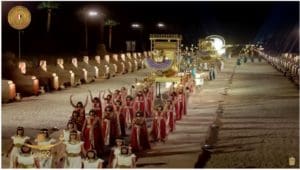

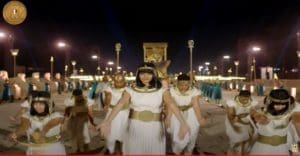
2. Unwrapping of Amenhotep I – Cairo
Here was a great king – the second king of the 18th Dynasty and New Kingdom. A ruler who initiated the famous Valley of the Kings – and the village of the workers (talented craftsmen who built it. His mummy was found in the late 19th century in a mummy cache in 1881 – but its bandages never removed.
In late 2021, An Egyptian research team consisting of Sahar Saleem, professor of radiology at Cairo University’s Faculty of Medicine, and Egyptologist and former Egyptian Minister of Antiquities Zahi Hawass managed to examine the mummy of the king, whose rule of (1525-1504 B.C.), by digitally unwrapping it using advanced computerized tomography (CT) scans. The study revealed (for the first time) the face, age, and health condition of Amenhotep I along with many secrets of the mummification and reburial of the mummy. Dr. Saleem said that revealing the face of the Egyptian king was a defining moment for her, as the first person in the world to see his face after he was reburied nearly 3,000 years ago. According to Saleem: “His face was oval, and he had a narrow chin, a small narrow nose, curly hair and slightly protruding upper teeth. He widely and distinctively resembled his father,” (the great King Ahmose, founder of the New Kingdom.)
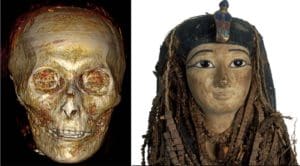
And the number one top discovery of 2021?
1. Amenhotep III’s Lost City – West Bank Luxor
Hawass calls it a golden city, but I am fairly sure there is little gold. What has been discovered however is no less amazing: the largest ancient city ever found in Egypt. The discovery of “Taen Aten” The Rise of the Aten made the number one spot in Archaeology Today’s top discoveries in the world of 2021.
On July 1, 2021, the Egyptian expedition headed by famous archaeologist (and PR man) Dr. Zahi Hawass discovered a massive city on the West bank of the Nile at Luxor. It was founded by one of the greatest rulers of Egypt, King Amenhotep III (1390-1353 BCE) and possibly in existence through Akhenaten to the end of the Amarna period
It was the largest administrative and industrial settlement in the era of the Egyptian empire,” Hawass said. This city likely served Amenhotep, a prolific builder, galvanize and manage his many great building projects during his most prosperous reign.
This city was vast with “serpentine walls” up to 10 feet high, and a mass of streets and houses. Archaeologists found “rooms filled with tools of daily life … left by the ancient residents as if it were yesterday,” such as rings, colored pottery vessels, casting molds to make amulets, pots used to carry meat, and tools for spinning, weaving and metal and glassmaking.
Among the other notable finds are a large bakery, “complete with ovens and storage pottery,” a unique fish, and the skeleton of a person buried with arms stretched out to the side and rope wrapped around the knees. Very peculiar indeed.
“The discovery of this lost city is the second most important archeological discovery since the tomb of Tutankhamun.” – Betsy Bryan, professor of Egyptology at Johns Hopkins University

No doubt, investigation of this city will shed new light on the ever-fascinating civilization of Egypt throughout the coming year.
What do all these exciting happenings in Egypt mean? Ultimately this: the country is getting ready to welcome back tourists with wide open arms and abundant pride. A wealth of exciting new exhibits, restored sites, and dazzling new archaeological treasures await. Its already treasure-packed museums are being refreshed, modernized – and a host of new museums are opening. What’s more, the field of Egyptology continues to grow as we all expand our understanding of the lives and deaths of the endlessly fascinating ancient Egyptians.
